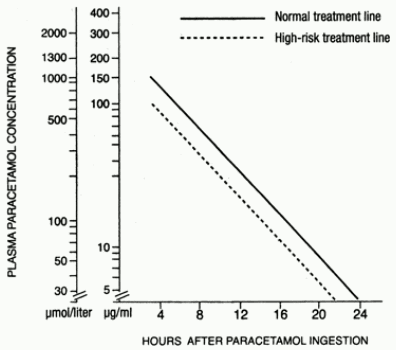CETVIO Film-coated tablet Ref.[51088] Active ingredients: Paracetamol Tramadol
Source: Health Products Regulatory Authority (ZA) Revision Year: 2023 Publisher: Teva Pharmaceuticals (Pty) Ltd, Maxwell Office Park, Magwa Crescent West, Waterfall City, Midrand, Gauteng, 2090
4.1. Therapeutic indications
CETVIO is indicated for the management of moderate to moderately severe pain in adults.
CETVIO is not recommended for minor pain that may be treated adequately through lesser means.
4.2. Posology and method of administration
Posology
To be used in adults and children over 16 years of age. DO NOT EXCEED THE RECOMMENDED DOSE.
Adults
For the management of pain, the recommended dose of CETVIO is 1 or 2 tablets every 4 to 6 hours as needed for pain relief up to a maximum of 8 tablets per day.
As with all analgesic medicines, a titration period of several days with gradual dose increases at the initiation of CETVIO therapy may be beneficial for some patients. Clinical studies with tramadol in patients with moderate to moderately severe chronic pain indicated that the tolerability of tramadol can be improved by starting at a lower dose with gradual upward titration to reach doses that provide sufficient pain relief.
Special populations
Renal impairment
For patients with creatinine clearance <30 mL/min, the dosing interval of CETVIO should be increased not to exceed 2 tablets every to 12 hours.
Method of administration
For Oral use.
Tablets must be swallowed whole, with a sufficient quantity of liquid. They must not be broken or chewed.
4.9. Overdose
The clinical presentation of overdosage may include the signs and symptoms of tramadol toxicity, paracetamol toxicity or both.
Tramadol
The initial symptoms of tramadol overdosage may include respiratory depression and/or seizures. Primary attention should be given to maintaining adequate ventilation along with general supportive treatment. While naloxone will reverse some, but not all symptoms caused by overdosage, the risk of seizures is also increased with naloxone administration. Treatment of restlessness and/or convulsions is symptomatic and supportive (benzodiazepines/barbiturates).
Tramadol is minimally eliminated from the serum by haemodialysis or haemofiltration. Treatment of acute intoxication with CETVIO with haemodialysis or haemofiltration alone is therefore not suitable for detoxification.
Paracetamol
Prompt treatment is essential. In the event of an overdosage, consult a medical practitioner immediately, or take the person directly to a hospital. A delay in starting treatment may mean that the antidote is given too late to be effective. Evidence of liver damage is often delayed until after the time for effective treatment has lapsed. Susceptibility to paracetamol toxicity is increased in patients who have taken repeated high doses (greater than 5-10 g/day) of paracetamol for several days, in chronic alcoholism, chronic liver disease, AIDS, malnutrition, and with the use of medicines that induce liver microsomal oxidation such as barbiturates, isoniazid, rifampicin, phenytoin and carbamazepine.
Symptoms of paracetamol overdosage in the first 24 hours include pallor, nausea, vomiting, anorexia and possibly abdominal pain. Mild symptoms during the first two days of acute poisoning, do not reflect the potential seriousness of the overdosage.
Liver damage may become apparent 12 to 48 hours or later after ingestion, initially by elevation of the serum transaminase and lactic dehydrogenase activity, increased serum bilirubin concentration and prolongation of prothrombin time.
Liver damage may lead to encephalopathy, coma and death.
Acute renal failure with acute tubular necrosis may develop even in the absence of severe liver damage. Abnormalities of glucose metabolism and metabolic acidosis may occur. Cardiac dysrhythmias have been reported.
Treatment for paracetamol overdosage
N-acetylcysteine should be administered to all cases of suspected overdose as soon as possible preferably within eight hours of overdosage, although treatment up to 36 hours after ingestion may still be of benefit, especially if more than 150 mg/kg of paracetamol was taken. An initial dose of 150 mg/kg N-acetylcysteine in 200 mL dextrose injection given intravenously over 15 minutes, followed by an infusion of 50 mg/kg in 500 mL dextrose injection over the next four hours, and then 100 mg/kg in 1 000 mL dextrose injection over the next sixteen hours. The volume of intravenous fluid should be modified for children. Although the oral formulation is not the treatment of choice, 140 mg/kg dissolved in water may be administered initially, followed by 70 mg/kg every four hours for seventeen doses.
A plasma paracetamol level should be determined four hours after ingestion in all cases of suspected overdosage. Levels done before four hours, unless high may be misleading. Patients at risk of liver damage, and hence requiring continued treatment with N-acetylcysteine, can be identified according to their plasma paracetamol overdose nomogram.
Those whose plasma paracetamol levels are above the ‘normal treatment line’, should continue Nacetylcysteine treatment with 100 mg/kg IV over sixteen hours repeatedly until recovery. Patients with increased susceptibility to liver damage as identified above, should continue treatment if concentrations are above the ‘high risk treatment line’. Prothrombin index correlates best with survival. Monitor all patients with significant ingestions for at least ninety six hours.
6.3. Shelf life
Blisters: 36 months.
HDPE bottles: 24 months.
6.4. Special precautions for storage
Store at or below 25°C.
Store tablets in the original package until required for use to protect from light.
Keep the container tightly closed in order to protect from moisture.
6.5. Nature and contents of container
CETVIO is packaged as follows:
PVC/Aluminium blister packs:
PVC Film Clear.
Foil Aluminium-Silver Plain.
The blister pack is packed into a carton box.
Pack sizes: 30 and 60.
Bottles:
White, round HDPE Bottles with polypropylene cap LNP HS LP-E/PV.
Pack sizes: 60 and 100.
Not all pack sizes may be marketed.
6.6. Special precautions for disposal and other handling
No special requirements.
© All content on this website, including data entry, data processing, decision support tools, "RxReasoner" logo and graphics, is the intellectual property of RxReasoner and is protected by copyright laws. Unauthorized reproduction or distribution of any part of this content without explicit written permission from RxReasoner is strictly prohibited. Any third-party content used on this site is acknowledged and utilized under fair use principles.
